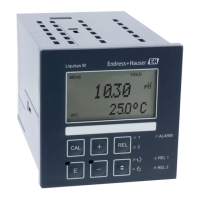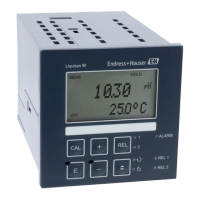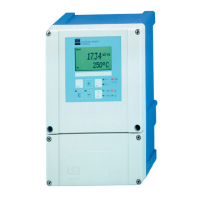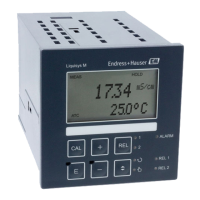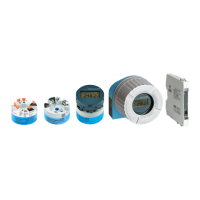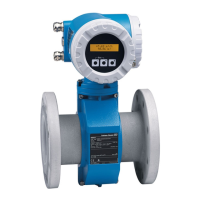Liquisys M CCM223/253 Maintenance
Endress+Hauser 99
9.2.2 Temperature measurement
The transmitter uses the NTC sensor of the chlorine sensor to measure the temperature.
Due to the relatively high sensor resistance, a two-wire connection is sufficient.
Simulation can be performed with a normal decade resistor. The table below contains
some simulation values:
Temperature NTC simulation value
0 °C (32 °F) 29.490 kΩ
10 ° C (50 °F) 18.787 kΩ
20 °C (68 °F) 12.268 kΩ
25 °C (77 °F) 10.000 kΩ
30 °C (86 °F) 8.197 kΩ
40 °C (104 °F) 5.594 kΩ
9.2.3 pH/ORP measurement
Simulation is performed with a pH/mV simulator or an mV voltage source.
In the case of the CCM223/253, the pH or mV must always be measured
symmetrically. For this reason, each simulation requires potential matching with the
simulator. Connect the reference signal of the simulator (normal shield of the pH
coaxial measuring line) to the PA/PM terminal of the transmitter.
Zero point rapid test
• In the case of the panel-mounted device, connect the BNC inner conductor to the BNC
receptacle and the PM terminal.
• In the case of the field device, connect the pH terminal, the Ref terminal and the PM
terminal.
• For pH the reading must be approx. 7, and for ORP approx. 0 mV.
Test with DC supply point
pH value Simulation
2 295 mV
4 177 mV
7 0 mV
9 -118 mV
12 -295 mV
9.2.4 Flow monitoring
Flow is monitored by an inductive proximity switch (INS) in the CCA250 assembly. This
switch is powered by 15 V from the auxiliary voltage output of the transmitter.
Function of the INS
Flow INS INS output
Yes damped low impedance
No not damped high-impedance
Test or emergency mode
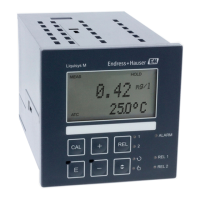
